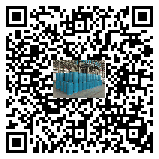Efficiency and quality upgrade: the five core competitiveness of metallic pigment dispersants
Metallic pigment dispersants have significant advantages in improving the application performance of metallic
pigments. The following is a detailed summary of their core advantages:
1. Improve dispersion stability
Prevent agglomeration: Metallic pigments (such as aluminum powder, copper powder, etc.) have small particles
and high surface energy, and are prone to agglomeration. Metallic pigment dispersants adsorb on the surface of
pigment particles to form a protective film, produce steric hindrance effect or electrostatic repulsion, effectively
prevent the pigment particles from approaching and agglomerating each other, and keep the pigments in a
uniformly dispersed state in the system.
Long-term stability: Dispersants can enhance the compatibility between pigment particles and the matrix, reduce
the sedimentation and stratification of pigments during storage and use, and ensure that the product maintains
stable performance and appearance for a long time.
2. Enhance gloss and decorativeness
Uniform distribution:
Good dispersibility allows metallic pigments to be evenly distributed in systems such as coatings, inks or plastics
to form a continuous and dense metallic gloss layer. When light shines on the surface of the product, it can produce
a uniform and bright reflection effect, greatly improving the gloss and glittering effect of the product, and enhancing
the visual appeal and decorativeness of the product.
Bright colors: Dispersants help metallic pigments to fully display their own color characteristics, making the color of
the product more vivid and full, meeting the needs of different customers for color and appearance effects.
3. Improve processing performance
Reduce viscosity: In coatings, inks and other systems, the agglomeration of metallic pigments will lead to increased
system viscosity, affecting the fluidity and construction performance during processing. Metallic pigment dispersants
can effectively reduce the viscosity of the system, so that the product has good fluidity, which is convenient for
processing operations such as brushing, spraying, and printing, and improves production efficiency.
Improve spraying uniformity: In the spraying process, well-dispersed metallic pigments can be evenly sprayed from
the spray gun to form a coating with uniform thickness, avoiding defects such as sagging and orange peel, and
ensuring the consistency of product quality.
4. Improve product performance
Enhance adhesion: Metallic pigment dispersants can improve the bonding force between pigment particles and
substrates, make the coating or printing layer better adhere to the surface of the substrate, improve the wear
resistance, scratch resistance and weather resistance of the product, and extend the service life of the product.
Improve chemical resistance: Dispersants help to form a dense coating structure, reduce the erosion of external
chemicals (such as acids, alkalis, salts, etc.) on the product, improve the chemical corrosion resistance of the
product, and are suitable for various harsh environments.
5. Reduce costs
Reduce the amount of pigment: Since dispersants can improve the dispersion efficiency of metallic pigments
and enable pigments to play a better coloring and decorative effect in the system, the amount of pigment can be
appropriately reduced to reduce production costs while achieving the same appearance effect.
Improve production efficiency: Good dispersion performance can reduce rework and scrap rates during
processing, improve production efficiency, and further reduce production costs.


